EVENTS
HISTORY AND CULTURE OF A TERRITORY
UNIQUE IN THE WORLD
UNIQUE IN THE WORLD
The essence of Tuscany, its traditions, its customs. Every year our territory is coloured by events that bring centuries-old customs and traditions into our present.
Historical re-enactments, ancient markets, float parades, music and photography festivals alternate. Every moment spent at Podere del Griccia is an occasion to live the enchantment of experiences to be remembered forever.
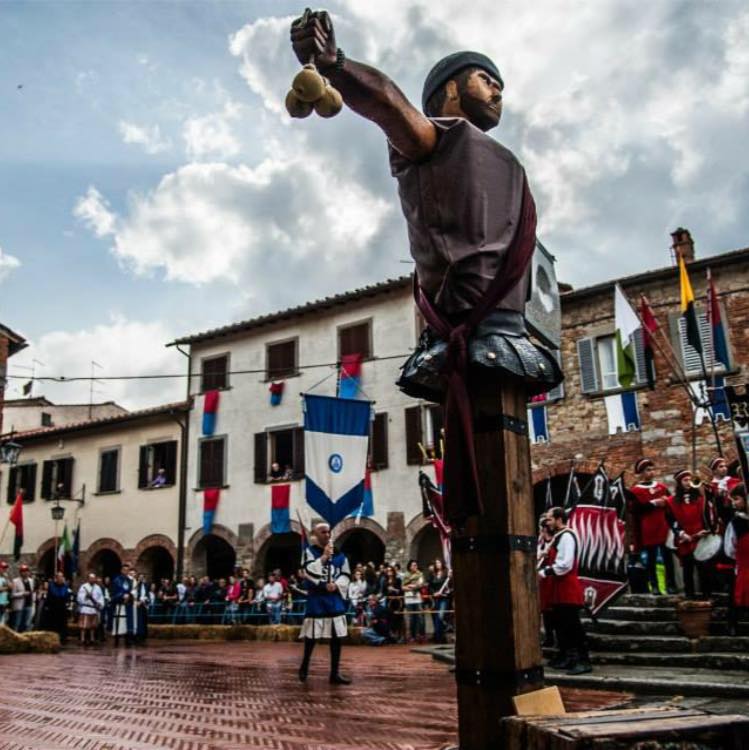
This is an event of medieval origin which takes place in Civitella (AR) over two days (Friday and Sunday) in June, usually in the second week of the month.
The Joust is run in the Piazza di Civitella, in front of the church, which is sadly famous because of a terrible Nazi-fascist massacre that took place here on 29 June 1944.
The name “Sarapino” derives from the fact that, during the Joust, a mechanical bee is used instead of the horse, while a few years ago, when this means of transport was not yet widespread, a cart pulled by a tractor was used to run the race. The origins of the Saracino date back to the late Middle Ages, when jousts and knights’ games were held in which people pretended to fight against the Saracino, the knights’ enemy.
The Sarapino begins on Friday evening with a propitiatory dinner held outside the Castle of Civitella. All four districts join together with their supporters. Everyone celebrates together with songs, chants and jokes.
Civitella is divided into four districts:
- Porta Aretina (yellow-black)
- Porta Senese (white-green)
- San Francesco (red-blue)
- La Torre (red-black)
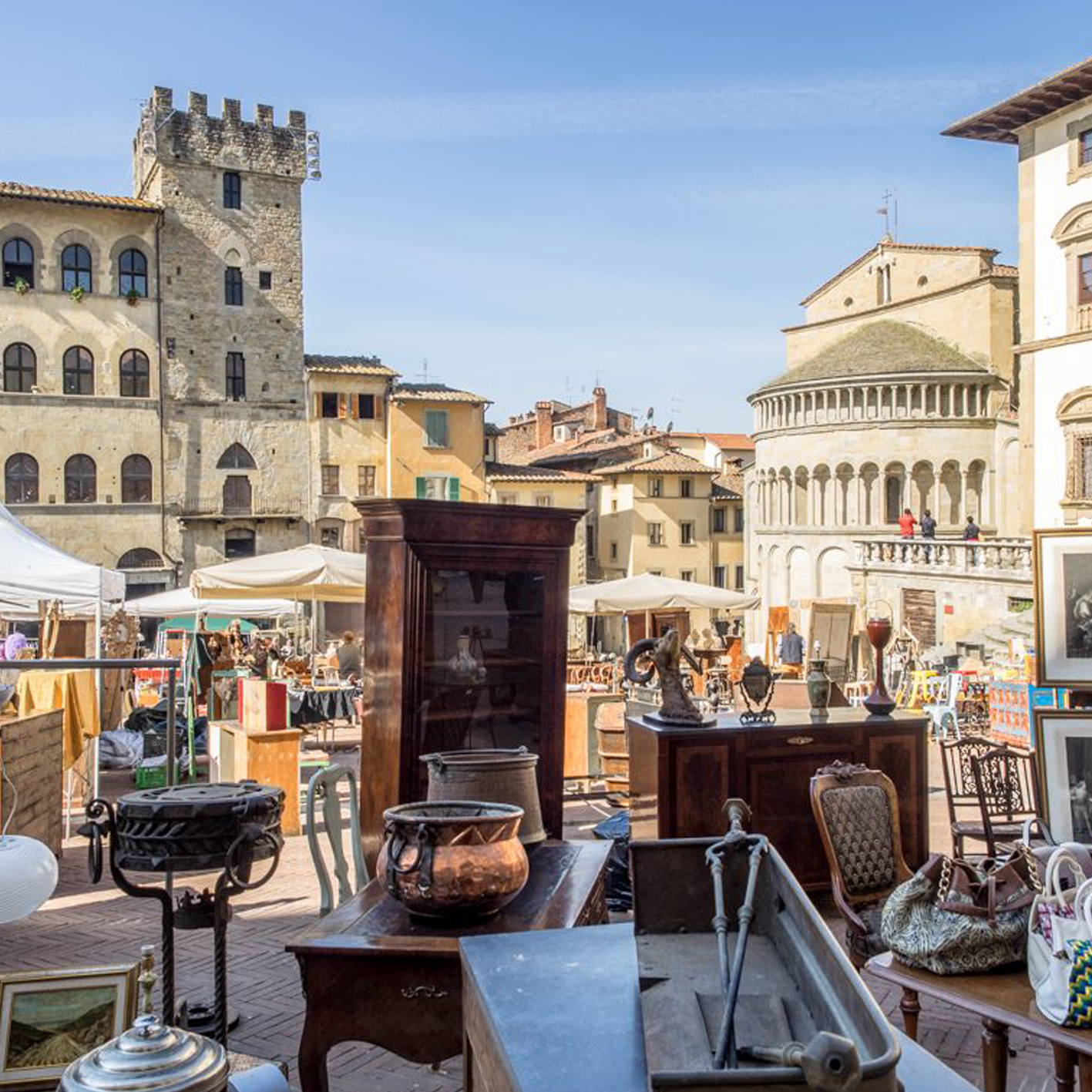
Since 1968, every first Sunday of the month and the preceding Saturday, in Piazza Grande and in the streets of the historic city centre, the Fair has been continuously entertaining visitors with a great variety of objects that make up the historic heritage of our identity, giving enthusiasts and experts the pleasure of the “trouvaille”, or the discovery and search for rare and curious pieces.
Hundreds of exhibitors offer thousands of visitors from all over the world their works of art, furniture, jewellery and bijoux, watches, books and antique prints, scientific and musical instruments, toys, old-fashioned linen and all kinds of collectibles. But that’s not all… for those who are not keen on antiques, the Fair offers a vast assortment of modern antiques, vintage and quality handicrafts.
The Arezzo Antiques Fair has always been considered the “biggest and most beautiful” of all the open-air antiques markets, thanks also to the extraordinary historical and architectural context in which it takes place.
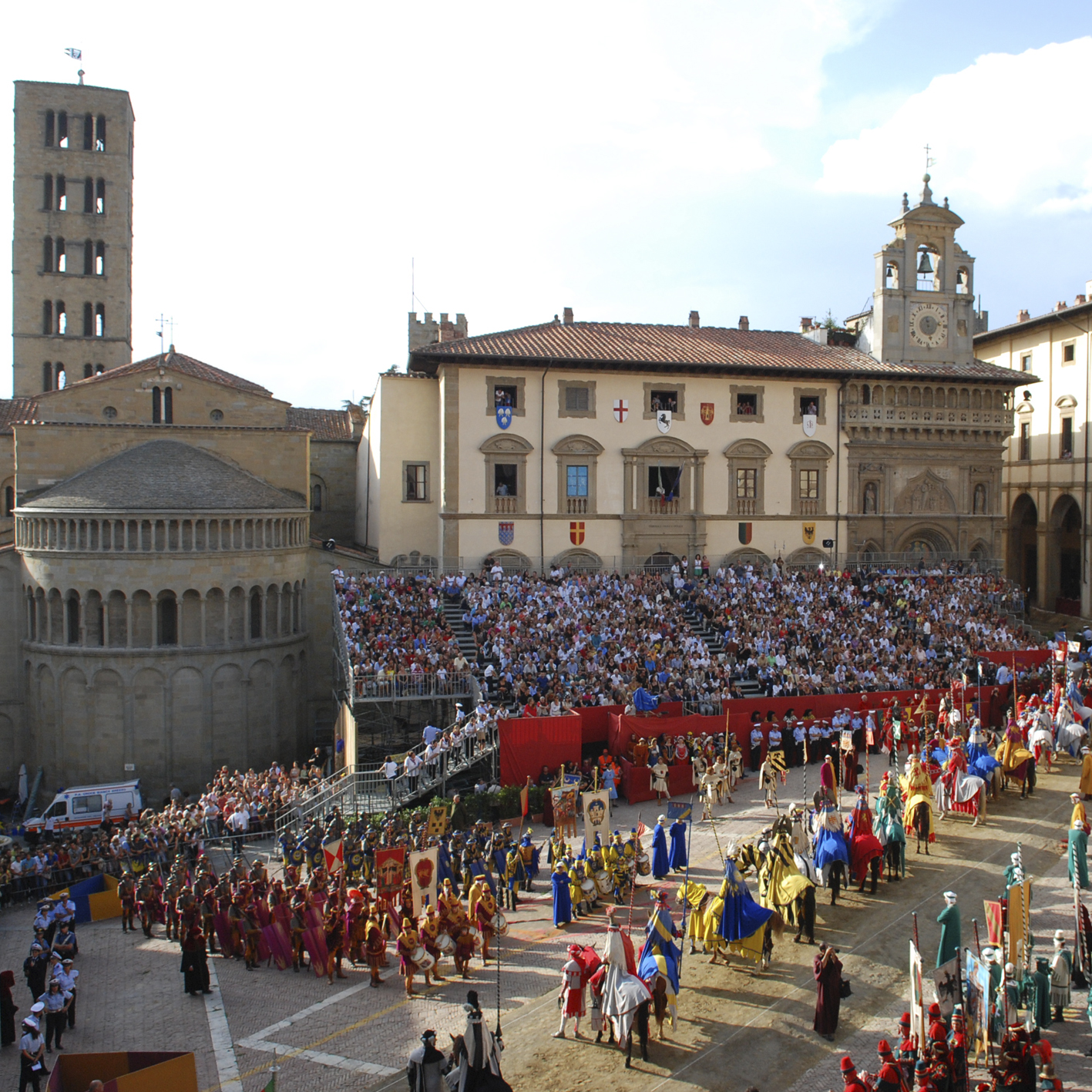
It is the main historical commemoration of the city of Arezzo. The event takes place twice a year: on the penultimate Saturday of June in the night edition (Giostra di San Donato) and on the first Sunday of September in the day edition (Giostra della Madonna del Conforto). It is paraded through the streets of the historic centre and the Giostra is held in Piazza Grande.
The actual competition consists of the challenge of the jousters/knights of the four gates who gallop, spear in hand, against the Saracen, an armoured automaton representing the Saracen armed with a mace (King of the Indies).
The knightly tournament attracts thousands of visitors who, fascinated by the historical procession, flock to the city streets. Welcomed by hundreds of figures in medieval costumes and dozens of horses, punctuated by the sound of trumpets and intoxicated by the colours of the flags, the procession takes the city back to the past and immerses the citizens of Arezzo and tourists in a unique and festive atmosphere. The event has its origins in the Middle Ages. The tournaments and jousts of Arezzo are also described by Dante Alighieri at the beginning of the 22nd Canto of the Inferno.
The quarters into which the city is divided are 4:
- Porta Crucifera (red-green)
- Porta del Foro (red-yellow)
- Porta Sant’Andrea (white-green)
- Porta Santo Spirito (yellow-blue)
On the evening before the Joust, celebrations are held in each quarter to propitiate victory. Thousands of quarters sit down at the table, wearing scarves in their own colours, to sing festive choruses and give the right charge to the jousters, who in a few hours’ time will challenge the King of the Indies. The location for each propitiatory dinner is the square adjacent to the historic headquarters of each district. Amidst toasts, choirs and music, the food is combined with joy to create a festive atmosphere that will last until late at night, inevitably ending in the morning when it is time to put on the medieval costume and parade to conquer Piazza Grande.
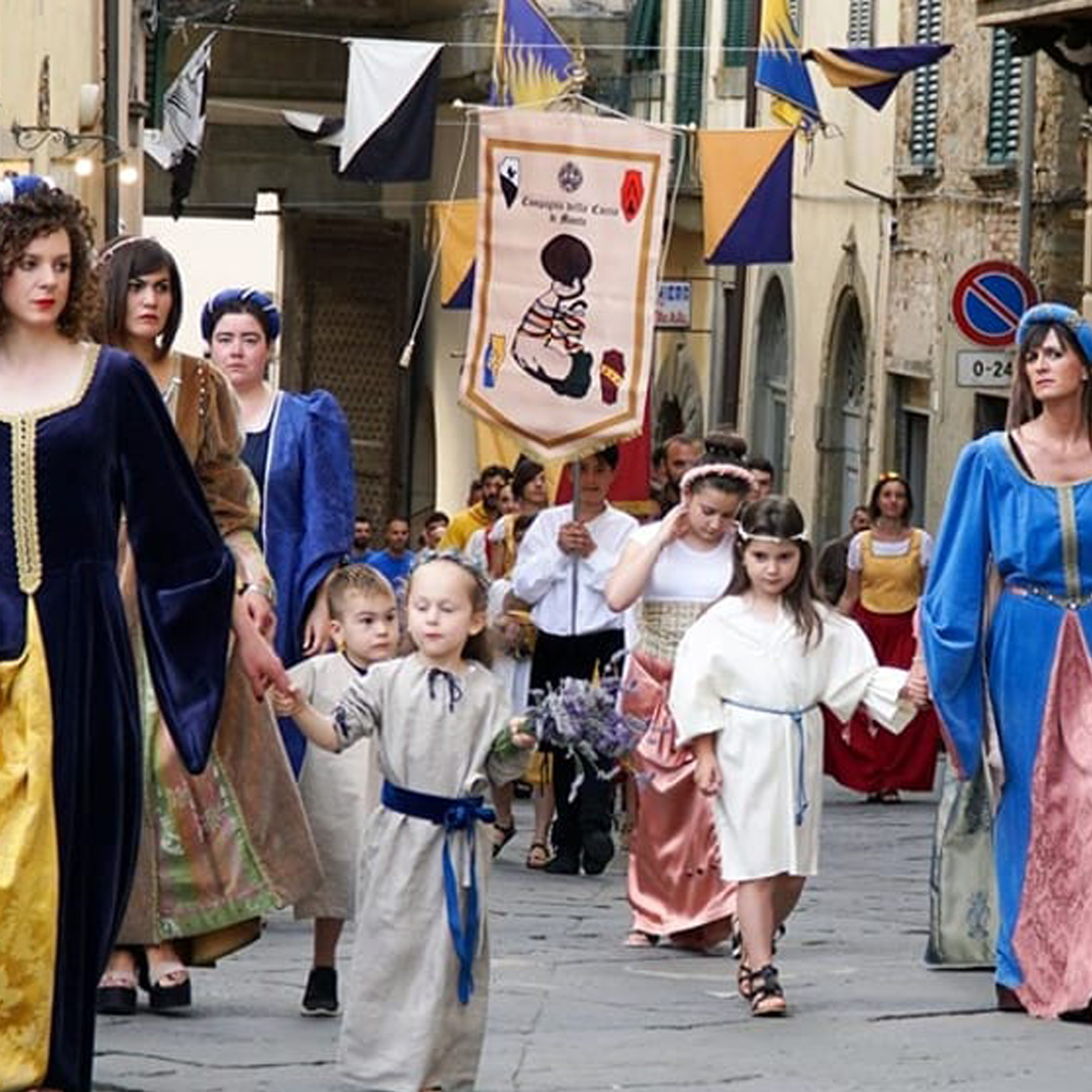
Every year in June, the community of Monte San Savino re-enacts the ceremony of the investiture of Count Baldwin with the solemn granting of the keys to the town, which relives, with public processions and celebrations, one of the most significant pages of its history. Nobles and common people take part in the “allegrezze” and among square games, banquets, merchants and acrobats, the city greets the new Count and gives thanks to the Patron Saints of our land.
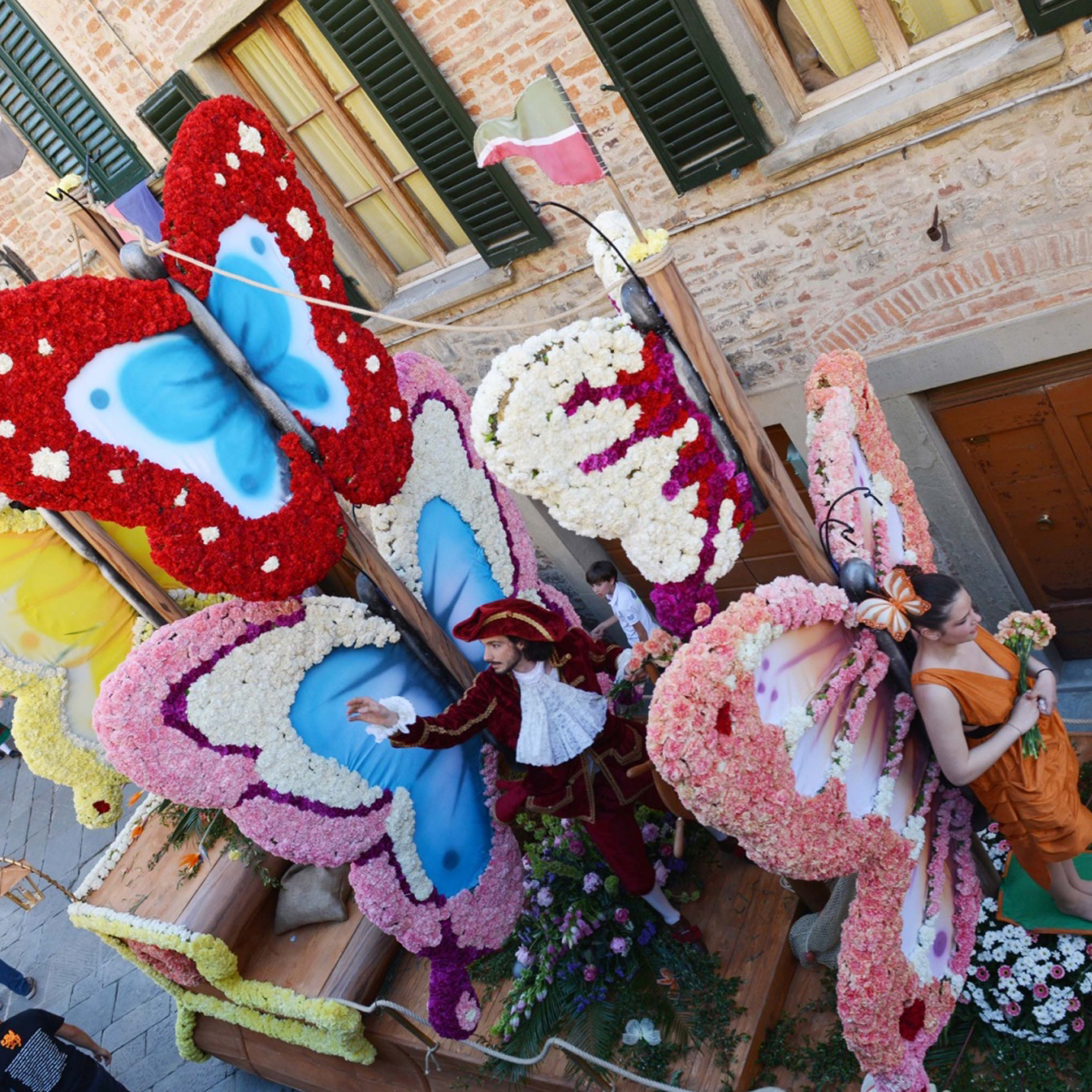
The tradition of the Maggiolata, reminiscent of the peasant past of the Valdichiana, is a festival that involves the whole town and an opportunity to celebrate the end of winter and the long-awaited return of Spring. The Maggiolata, traditionally held on the last two Sundays in May, is divided into several stages that include historical processions, parades of flowered floats, gastronomic tastings and evenings with music and dancing. The four districts of Lucignano (Giallo-Rossi or Rione Via Dell’Amore, Nero-Bianchi or Rione di Porta San Giusto, i Rosso-Blu or Rione di Porta Murata and i Giallo-Verdi or rione di Porta San Giovanni) compete to build the most beautiful flowered float, based on a common theme. The parade of floats is a festive and colourful moment, opened by the unsuspecting protagonists of the event, two Chianina cows that pull the first float dictating the pace of the procession.

This is an international photography festival held in the town of Cortona since 2011. The event is organised from July to September each year: three/four days of exhibition openings (which can then be visited until the end of the summer), workshops and portfolio readings, conferences, meetings and awards with photographers, photo editors and journalists from all over the world.
Cortona On The Move is the dynamic centre of contemporary photography where experimentation and tension towards future developments of the visual language are welcome.
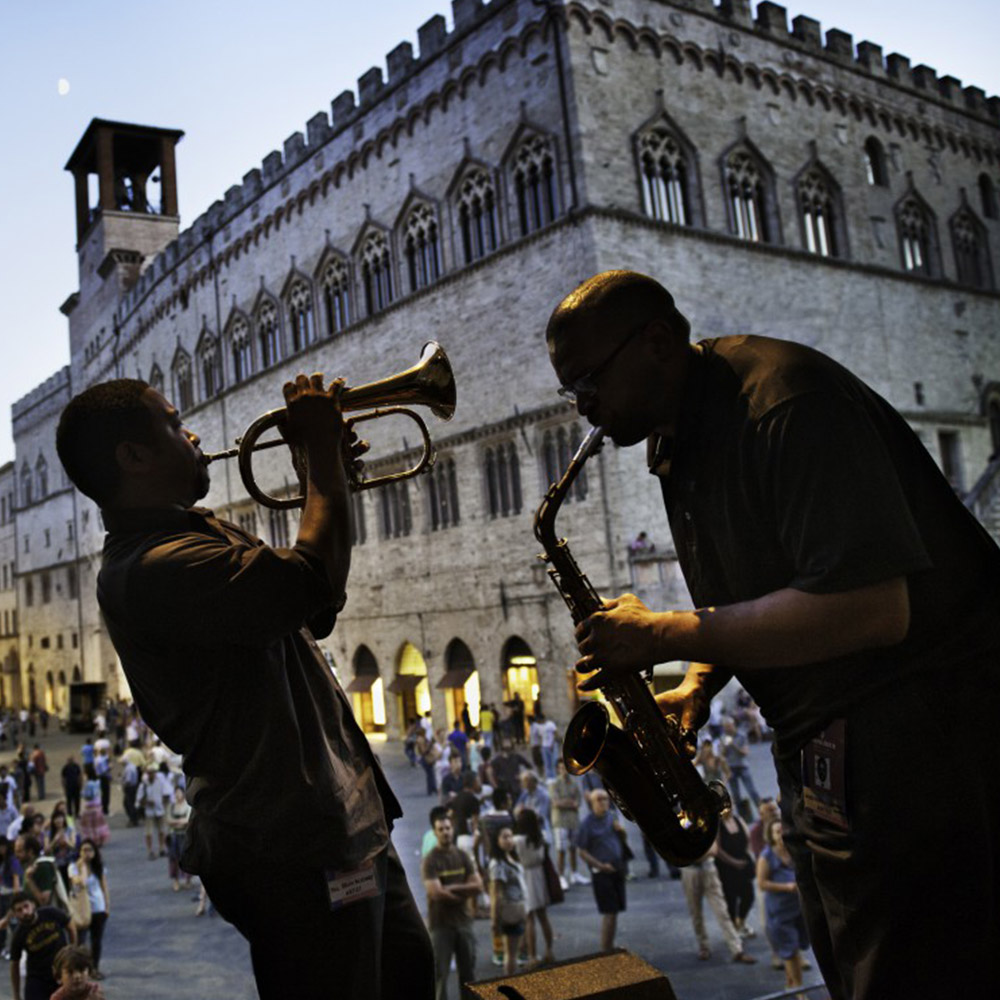
UMBRIA JAZZ is the most important Italian jazz music festival, founded in 1973 and held annually in Perugia, in July.
For about 10 days during the month of July, the city of Perugia devotes itself to and embraces the best of Italian and international jazz (and more), between the Arena Santa Giuliana, the Teatro Pavone, the Oratorio Santa Cecilia, Piazza IV Novembre and the Carducci gardens and various other exceptional locations. The Festival was officially launched on 23 August 1973, with concerts by Aktuala and the Thad Jones and Mel Lewis Orchestra, which included a very young Dee Dee Bridgewater. In 1982, Umbria Jazz acquired its definitive format, becoming permanent, establishing itself in the historic centre of Perugia and, for the most important concerts, becoming a paying event. Also the playbill changes: not only orthodox jazz, but also black music with pop-rock digressions, as the appearances of Elton John, Carlos Santana and Eric Clapton testify.
For 10 days, the heart of Perugia becomes a global music village, where notes can be heard at any hour in the medieval buildings and squares. A real boon for lovers of good music, and not only for them.
INFO REQUEST
FILL OUT THE FORM BELOW AND YOU WILL BE
CONTACTED AS SOON AS POSSIBLE
info@poderedelgriccia.it
Find us on Google Maps
+39 333 5659939
